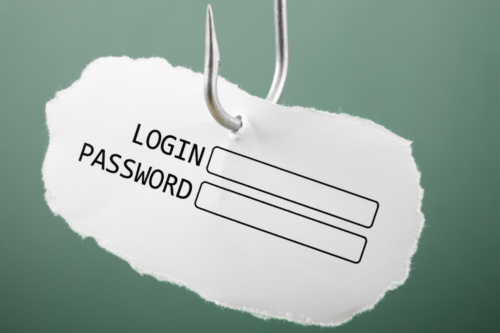Understanding the Relationship Between Unified Access and Zero Trust

In the complex and ever-evolving world of cybersecurity, protecting an organization’s digital assets against breaches requires more than just traditional perimeter defenses. With cyber threats becoming more sophisticated, a dynamic and holistic approach is needed. Enter the concept of Zero Trust Access Control, a strategic initiative that helps organizations prevent unauthorized access, contain breaches, and reduce the risk of data loss by assuming that threats could be both external and internal. This blog post delves into how Unified Access and Zero Trust work hand in hand to provide a robust security framework, particularly addressing the needs of Chief Information Security Officers who are at the forefront of minimizing cybersecurity risks and optimizing the cybersecurity budget, all while ensuring compliance and adapting to new threats.
Decoding Zero Trust Access Control
Zero Trust Access Control represents a significant departure from conventional security paradigms, which traditionally placed implicit trust within the network perimeter. The Zero Trust model embodies a comprehensive and preemptive approach to security, predicated on the foundational principle of “never trust, always verify.” In this framework, each request for access is treated with skepticism, irrespective of its origin, and must undergo rigorous verification before access is granted. This necessitates a continuous evaluation process, wherein a user’s credentials and the context of their request are meticulously examined to ensure they align with the access level they are seeking. The implementation of Zero Trust hinges on this granular scrutiny and validation, aiming to significantly narrow the opportunities for unauthorized access and mitigate potential breaches.
Central to achieving Zero Trust’s objectives is the ability to authenticate and authorize every access request with precision. This model demands a dynamic and flexible security posture, capable of adjusting to the constantly evolving threat landscape and the changing contexts of access requests. By adopting a Zero Trust approach, organizations embark on a strategic transformation of their security architecture, moving away from the outdated assumption of implicit trust within their networks. Instead, they cultivate an environment where security decisions are made on a case-by-case basis, leveraging real-time data and comprehensive validation processes. This shift not only enhances the overall security framework but also propels organizations towards a more proactive and resilient cybersecurity stance.
The Role of Unified Access in Facilitating Zero Trust
Unified Access is integral to the deployment and efficacy of a Zero Trust security model, serving as the architectural backbone that supports and enhances its principles. By offering a unified and integrated platform for access control, it simplifies the orchestration of security policies across an organization’s entire digital ecosystem, from cloud services and on-premises applications to mobile and IoT devices. This holistic approach is essential for enforcing the granular access controls and real-time security assessments required by Zero Trust, ensuring that only authenticated and authorized entities can interact with sensitive resources under strict compliance with the policy of least privilege.
Furthermore, Unified Access facilitates the seamless application of dynamic security policies that can adapt to the contextual variables of each access request, such as user location, device health, and the sensitivity of the accessed data. This adaptability is crucial for maintaining a robust defense against the rapidly evolving threat landscape and the increasing sophistication of cyber attacks. By leveraging the centralized visibility and control provided by Unified Access, organizations can more effectively monitor and manage access events, detect anomalies, and respond to potential security threats in real-time.
In essence, Unified Access not only simplifies the practical implementation of the Zero Trust model but also amplifies its effectiveness. It enables a more agile and responsive security posture that aligns with the dynamic nature of modern digital environments and the pervasive challenges they face. Through its integral role, Unified Access ensures that the principles of Zero Trust can be consistently and effectively applied across the breadth of an organization’s operations, providing a foundation for a more secure and resilient digital infrastructure.
Enforcing Least Privilege Across Every Access Point
The foundational element shared by Unified Access and Zero Trust frameworks is the meticulous enforcement of the least privilege principle. This doctrine is pivotal, restricting access rights for users to the bare minimum necessary for the completion of their tasks. By adopting this approach, organizations effectively create a stringent barrier against unauthorized access, significantly diminishing the avenues through which attackers can infiltrate or escalate their privileges within a network.
Implementing least privilege across every access point necessitates a nuanced understanding of user roles, the data they require access to, and the conditions under which access is granted. It involves a dynamic assessment of access needs, continuously adjusting permissions in line with changing job responsibilities, ensuring that access rights remain tightly aligned with actual requirements.
This process is facilitated by sophisticated identity security solutions, which enable precise control over access permissions. Through mechanisms like contextual authentication, these solutions can determine the appropriate access levels based on real-time analysis of user identity, location, device security posture, and other relevant factors. This not only fortifies security measures but also streamlines the user experience, allowing legitimate users to access necessary resources without undue friction.
In practice, the enforcement of least privilege represents a proactive defense strategy, minimizing potential damage from breaches by limiting what attackers can access. This principle is integral to both preventing unauthorized access and containing the impact of any security incidents that do occur, thereby playing a crucial role in the overall effectiveness of the Zero Trust and Unified Access security models.
Leveraging Identity Security for Unified Access and Zero Trust Integration
In the intertwined realms of Unified Access and Zero Trust, identity security emerges as a critical connector, ensuring that access controls are not only stringent but also intelligently adaptive. This synergy is made possible through an array of sophisticated identity security technologies, which collectively empower organizations to verify and validate the legitimacy of each access request in a nuanced manner. The cornerstone technologies such as multi-factor authentication (MFA), single sign-on (SSO), and identity governance serve as the first line of defense, enhancing security without compromising on user convenience.
The utilization of these identity security measures enables a seamless integration of Zero Trust principles within a Unified Access framework. MFA, by requiring multiple proofs of identity, effectively thwarts unauthorized access attempts, aligning perfectly with the Zero Trust mandate of “never trust, always verify.” Meanwhile, SSO simplifies the user’s navigation across various applications and services, ensuring that security measures do not hinder productivity. Identity governance, on the other hand, provides a comprehensive overview of access patterns and permissions, enabling continuous refinement of access controls in alignment with the evolving organizational needs and threat landscapes.
What sets identity security as a pivotal element in this integration is its ability to dynamically adjust access controls based on real-time assessments of risk factors associated with each access request. Whether it’s evaluating the security posture of the device being used, the location from which a request originates, or the sensitivity of the data being accessed, identity security technologies provide the necessary granularity of control. This dynamic adaptability ensures that the principles of Zero Trust are not only upheld but are also effectively operationalized within the context of Unified Access, thereby fortifying an organization’s defenses against the increasingly sophisticated cyber threats of today’s digital landscape.
The Business Impacts of Integrating Unified Access with Zero Trust
Merging Unified Access with Zero Trust is not just a strategic move for enhancing security—it also carries significant implications for organizational efficiency and financial health. By implementing a framework that insists on rigorous authentication and authorization for every access attempt, companies place themselves in a formidable position against cyber threats. This bolstered defense mechanism does more than just protect critical data; it aligns with compliance mandates, thereby mitigating legal and financial repercussions associated with data breaches. The ripple effect of such an integrated approach extends to the operational budget as well. With a streamlined process for managing access, the redundancy seen with multiple, overlapping security tools is considerably reduced, leading to a more efficient allocation of resources.
The agility offered by this cohesive strategy enables businesses to swiftly respond to evolving technological landscapes and cyber threat tactics, ensuring they remain a step ahead in safeguarding their digital domains. Furthermore, this integration paves the way for an advanced level of automation in access management. By relying on the principles of Zero Trust to automate decision-making processes related to user access, organizations can reallocate human capital from mundane, administrative tasks to focus on broader, strategic objectives. This shift not only enhances the productivity of the IT department but also fosters a culture of innovation, driving the company forward in its operational and security endeavors. Thus, the confluence of Unified Access and Zero Trust extends beyond mere cybersecurity enhancements, touching upon vital aspects of business operations, financial management, and organizational agility.
Try Portnox Cloud for Free Today
Gain access to all of Portnox's powerful zero trust access control free capabilities for 30 days!






